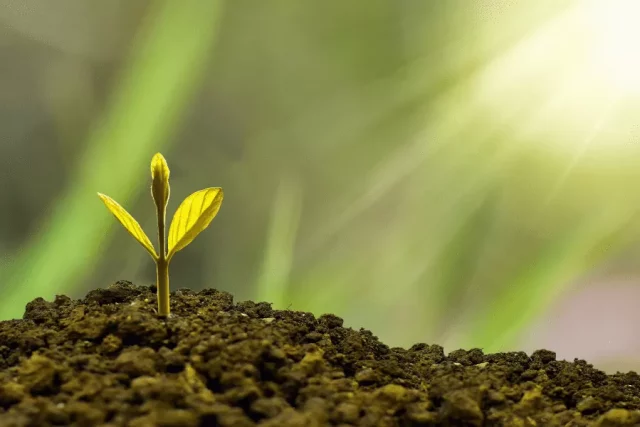Do you want to learn how to grow healthy plants? It can be tricky to get started, but with the right information, you can be successful. In this article, we will provide you with everything you need to know about growing plants successfully. We will discuss the different types of plants that you can grow, as well as the best ways to care for them. By following our tips, you will be able to create a thriving garden full of healthy plants!
Choose Plants According To Your Climate
One of the most important factors in growing healthy plants is to choose varieties that will do well in your climate. If you live in an area with a lot of sun, you should select plants that can tolerate high temperatures and direct sunlight. Likewise, if you live in a cooler climate, you should choose plants that can survive frost and cold weather. Also, make sure to select plants that are native to your region, as they will be better adapted to the local climate and soil conditions. If you are unsure about which plants to choose, you can always consult with a local nursery or gardening center.
Provide Adequate Water And Sunlight
All plants need water and sunlight in order to grow. However, different types of plants have different watering and light requirements. For example, succulents and cacti need very little water, while other plants, such as tomatoes, need a lot of water. Make sure to research the watering needs of your specific plant varieties. Namely, you can also give growing light a chance if you have plants inside the house. You can learn more here when it comes to different types of grow lights. On the other hand, when it comes to watering your plants, it is best to do so early in the day so that they have time to dry out before nightfall.
This will help prevent fungal diseases. All plants also need sunlight to grow, but again, different plants have different light requirements. For example, some plants need full sun, while others do better in partial shade. Make sure to research the light needs of your specific plant varieties.
Prepare Your Soil
Another important step in growing healthy plants is to prepare your soil. The type of soil you have will determine what kind of plants you can grow, as well as how successful they will be. If you have sandy soil, you should add organic matter, such as compost or manure, to help retain moisture. If you have clay soil, you should aerate it to improve drainage. You can also amend your soil with fertilizers or amendments to improve its quality. A soil test can help you determine what kind of nutrients your soil is lacking.
Namely, the best way to add nutrients to the soil is by using fully composted manure, which can be bought from nurseries. Then, you should dig it into the topsoil to a depth of around eight inches. This is typically done in the fall so that the manure has time to break down before you plant anything in the spring.
Keep An Eye On The Bugs
One of the most common problems that gardeners face is dealing with pests. There are a number of different ways to deal with pests, such as using traps, barriers, or chemicals. However, the best way to deal with pests is to prevent them from becoming a problem in the first place. The best way to do this is to choose plants that are naturally resistant to pests. You can also attract beneficial insects to your garden, such as ladybugs and lacewings, which will help control pest populations.
A good practice is to check your plants regularly for signs of pests or diseases. If you see anything out of the ordinary, such as holes in leaves or wilting, make sure to investigate further. Catching problems early is the best way to prevent them from becoming serious issues. This can help to prevent your plants from being damaged or killed.
Harvest Your Plants At The Right Time
Another important step in growing healthy plants is to harvest them at the right time. If you harvest your plants too early, they will not be at their best. If you harvest your plants too late, they may be overripe or past their prime. Make sure to research the proper harvesting time for your specific plant varieties. A general rule of thumb is to harvest fruits and vegetables when they are at their peak of ripeness. Moreover, to be sure that your plants are ripe, you can conduct the following test: gently squeeze the fruit or vegetable in question. If it’s ripe, it will yield to the pressure.
Otherwise, it needs more time to ripen on the vine. Finally, cut the fruit or vegetable from the plant using a sharp knife or shears. This will help prevent damage to the plant.
Clean Up Your Garden In The Fall
Once your plants have been harvested, it is important to clean up your garden in the fall. This will help prevent diseases and pests from overwintering in your garden. Remove all dead leaves and plant debris, and dispose of them in the trash. You should also remove any annual plants that are past their prime. Annual plants should be replaced with fresh plants every year. Once your garden is clean, you can mulch it to help protect your plants from the cold winter weather.
Once you have cleared your garden, you can start planning for the next growing season. This is the perfect time to research new plant varieties and start making a list of what you want to grow. You can also start preparing your soil by adding compost or other amendments. Taking these steps will help ensure that you have a healthy and successful garden in the coming year.
By following these steps, you can grow healthy plants that will thrive in your garden for years to come. Just remember to start with healthy soil, provide adequate water and sunlight, keep an eye on the bugs, and harvest your plants at the right time. And don’t forget to clean up your garden in the fall! With a little bit of care, you can have a beautiful and bountiful garden that you can enjoy for many years to come!














